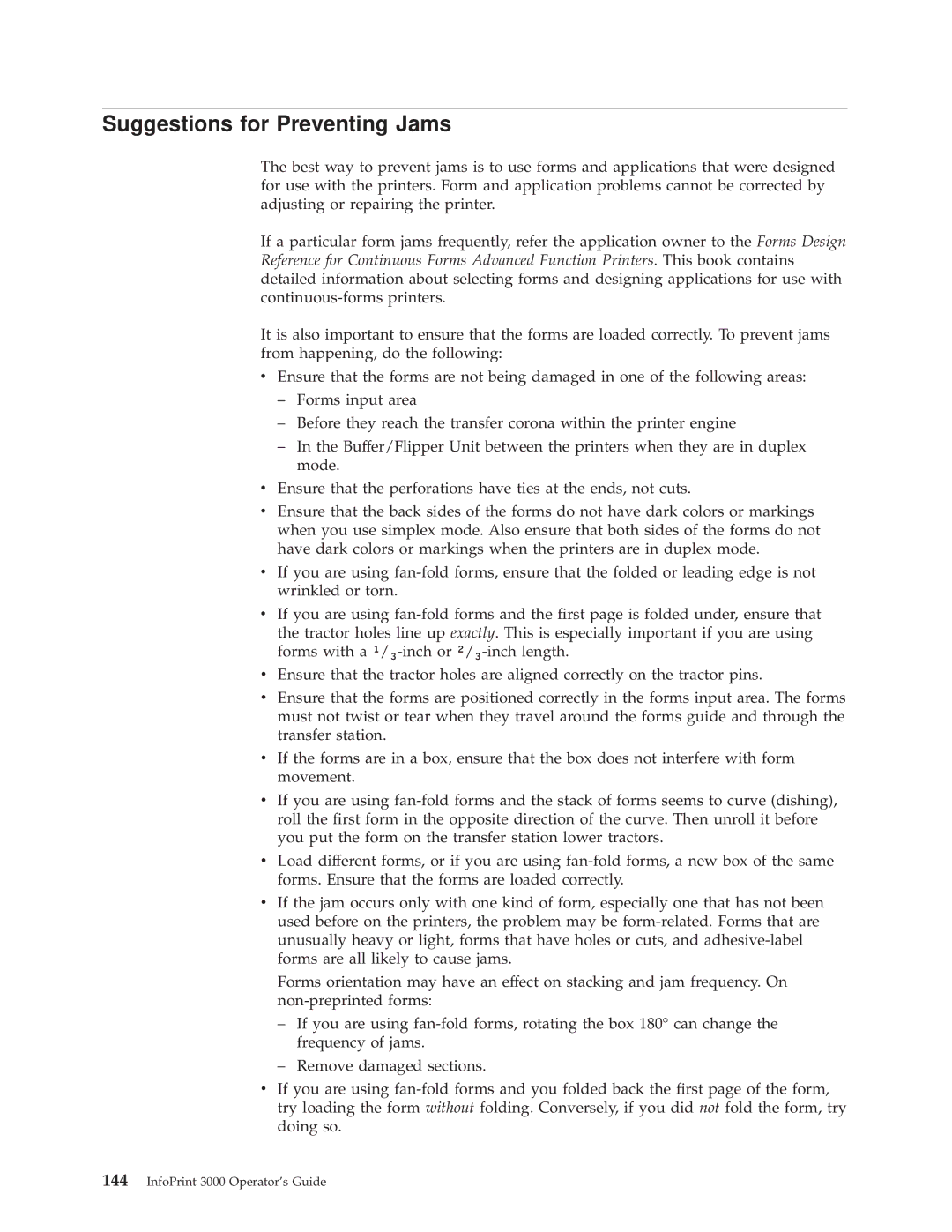Suggestions for Preventing Jams
The best way to prevent jams is to use forms and applications that were designed for use with the printers. Form and application problems cannot be corrected by adjusting or repairing the printer.
If a particular form jams frequently, refer the application owner to the Forms Design Reference for Continuous Forms Advanced Function Printers. This book contains detailed information about selecting forms and designing applications for use with
It is also important to ensure that the forms are loaded correctly. To prevent jams from happening, do the following:
vEnsure that the forms are not being damaged in one of the following areas:
±Forms input area
±Before they reach the transfer corona within the printer engine
±In the Buffer/Flipper Unit between the printers when they are in duplex mode.
vEnsure that the perforations have ties at the ends, not cuts.
vEnsure that the back sides of the forms do not have dark colors or markings when you use simplex mode. Also ensure that both sides of the forms do not have dark colors or markings when the printers are in duplex mode.
vIf you are using
vIf you are using
vEnsure that the tractor holes are aligned correctly on the tractor pins.
vEnsure that the forms are positioned correctly in the forms input area. The forms must not twist or tear when they travel around the forms guide and through the transfer station.
vIf the forms are in a box, ensure that the box does not interfere with form movement.
vIf you are using
vLoad different forms, or if you are using
vIf the jam occurs only with one kind of form, especially one that has not been used before on the printers, the problem may be
Forms orientation may have an effect on stacking and jam frequency. On
±If you are using
±Remove damaged sections.
vIf you are using
